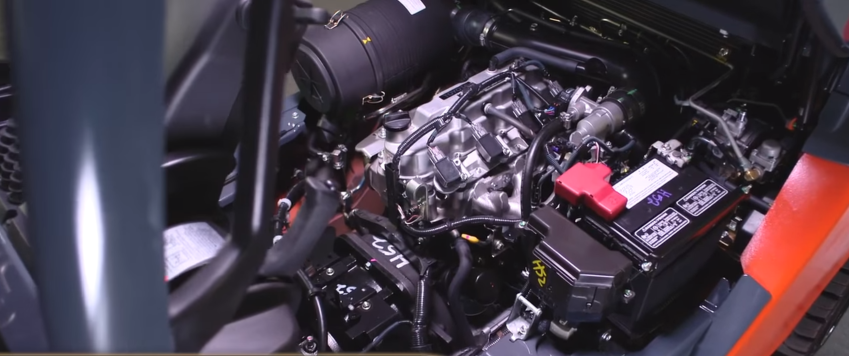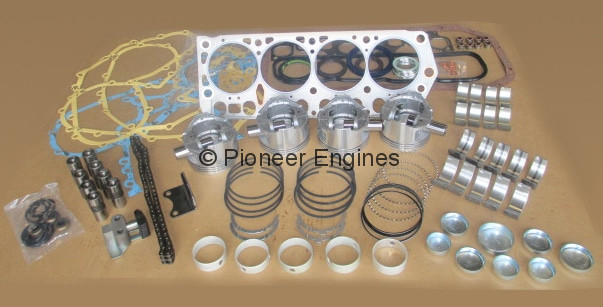The Advantages of Choosing a Vehicle Powered by the 4Y Engine
The Advantages of Choosing a Vehicle Powered by the 4Y Engine
Blog Article
Exploring the Various Types of Engine: Which One Fits Your Requirements?
In the mission to establish one of the most ideal engine kind for your details needs, it is essential to assess the unique attributes and benefits of each choice readily available. Interior burning engines continue to dominate as a result of their reliability, while electric engines are gaining traction for their sustainability. Hybrid engines provide a versatile compromise, and diesel engines stand out for their power popular applications. Additionally, different gas engines existing ingenious services, albeit with certain limitations. Recognizing your top priorities will certainly contribute in this decision-making process, resulting in an exploration of variables that might influence your choice.

Interior Burning Engines
Interior combustion engines (ICEs) are the foundation of contemporary transportation, powering a huge range of vehicles from autos to aircrafts. These engines operate on the concept of converting gas right into mechanical energy via a series of regulated explosions within a burning chamber. The most common types of ICEs consist of gasoline engines, diesel motor, and rotary engines, each designed to satisfy specific efficiency and efficiency requirements.
Fuel engines commonly use trigger ignition, while diesel engines depend on compression ignition, resulting in unique distinctions in fuel effectiveness and power output (4y engine). Rotary engines, or Wankel engines, use a compact style and smooth procedure, but are less frequently used in mainstream applications
ICEs have undertaken significant improvements in modern technology, including the introduction of turbocharging and gas shot systems, which boost overall effectiveness and efficiency. Despite their efficiency enhancements, ICEs deal with raising scrutiny due to their environmental effect, specifically concerning greenhouse gas discharges. As the vehicle sector advances, the future of ICEs remains a topic of argument, balancing performance, effectiveness, and ecological factors to consider. They proceed to play a vital duty in international transport framework.
Electric Engines
As issues about environmental sustainability and nonrenewable fuel source dependence expand, electric engines have actually become a compelling alternative to internal burning engines. These engines use electric motors powered by batteries or gas cells, supplying a cleaner and much more efficient motive powers.
One of the key benefits of electric engines is their lowered exhausts. Unlike typical engines that shed nonrenewable fuel sources, electric engines create no tailpipe emissions, significantly decreasing air pollution and adding to boosted public health and wellness. Additionally, the performance of electric motors frequently goes beyond that of interior burning engines, converting a greater percentage of energy from the source of power into functional energy for motion.
Electric engines are also remarkable for their peaceful procedure, making them optimal for city atmospheres. 4y engine. The simpleness of their style causes fewer relocating parts, which can lead to reduced upkeep costs and boosted reliability gradually
Nonetheless, difficulties continue to be, including battery production influences, charging facilities, and array limitations. In spite of these difficulties, the growing investment in electrical lorry technology and renewable resource sources points towards an encouraging future for electric engines, positioned to play a critical role in the transition towards lasting transport.
Hybrid Engines
Blending the advantages of both traditional and electric interior burning engines, hybrid engines stand for a functional solution in the quest for effective and sustainable transportation. These engines integrate a fuel or diesel motor with an electrical motor, enabling improved fuel effectiveness and minimized exhausts contrasted to standard lorries.
Hybrid engines operate in several modes, utilizing the electric motor for low-speed driving and the internal combustion engine for higher speeds or when even more power is required. This vibrant procedure not just enhances fuel economic situation however likewise adds to Visit Website a smoother driving experience. Regenerative braking is another vital attribute, capturing energy typically lost during stopping and redirecting it to charge the battery.

As customers significantly prioritize eco-friendliness, crossbreed engines stick out as a useful choice, supplying an efficient equilibrium of performance, efficiency, and ecological responsibility. This flexibility makes them appropriate for city commuting and long-distance traveling alike.
Diesel Engines
Performance and power are trademarks of diesel motor, which have long been preferred for their toughness and gas economic climate. These engines run on the principle of compression ignition, where air is pressed to a heat prior to fuel is infused, sparking it without the requirement for ignition system. This process makes it possible for diesel engines to accomplish greater thermal efficiency contrasted to gasoline engines, equating right into better gas gas mileage and lower carbon dioxide exhausts.
Diesel motor are especially well-suited for durable applications such as vehicles, buses, and commercial equipment, where torque and resilience are vital. Their layout generally includes stronger elements to stand up to the greater stress generated during operation, leading to longer service life and minimized upkeep prices.

Different Gas Engines
While diesel engines have long controlled the landscape of durable power sources, alternative gas engines are getting traction as viable alternatives for a much more sustainable future. These engines make use of a range of fuels, such as pressed gas (CNG), gas, hydrogen, and ethanol, aiming to minimize greenhouse gas emissions and dependence on nonrenewable fuel sources.
One significant benefit of alternative gas engines is their prospective to reduced carbon footprints. CNG engines give off less contaminants contrasted to conventional diesel why not try these out engines, making them ideal for metropolitan transportation systems and fleets seeking to improve air quality. Ethanol, obtained from biomass, not just decreases exhausts but additionally supports agricultural economic situations.
Hydrogen fuel cells stand for a cutting-edge advancement in this world, offering zero-emission power with a chain reaction between hydrogen and oxygen. Challenges such as infrastructure growth and manufacturing expenses continue to be challenges to prevalent fostering.
Conclusion
Inner burning engines supply dependability, while electric engines prioritize sustainability and reduced maintenance. Hybrid engines integrate the advantages of both, enhancing performance, whereas diesel engines give premium power and torque for durable applications.
Hybrid engines offer a flexible compromise, and diesel engines stand out for their power in requiring applications. The most usual types of ICEs include fuel engines, diesel engines, and rotating engines, each designed to satisfy particular efficiency and performance requirements.
Unlike traditional engines that melt fossil fuels, electric engines generate absolutely no tailpipe emissions, significantly decreasing air pollution and adding to enhanced public health.Crossbreed engines operate in numerous settings, using the electric motor for low-speed driving and the interior combustion engine for greater speeds or when even more power is needed. Crossbreed engines incorporate the benefits of both, improving efficiency, whereas diesel engines give remarkable power and torque for heavy-duty applications.
Report this page